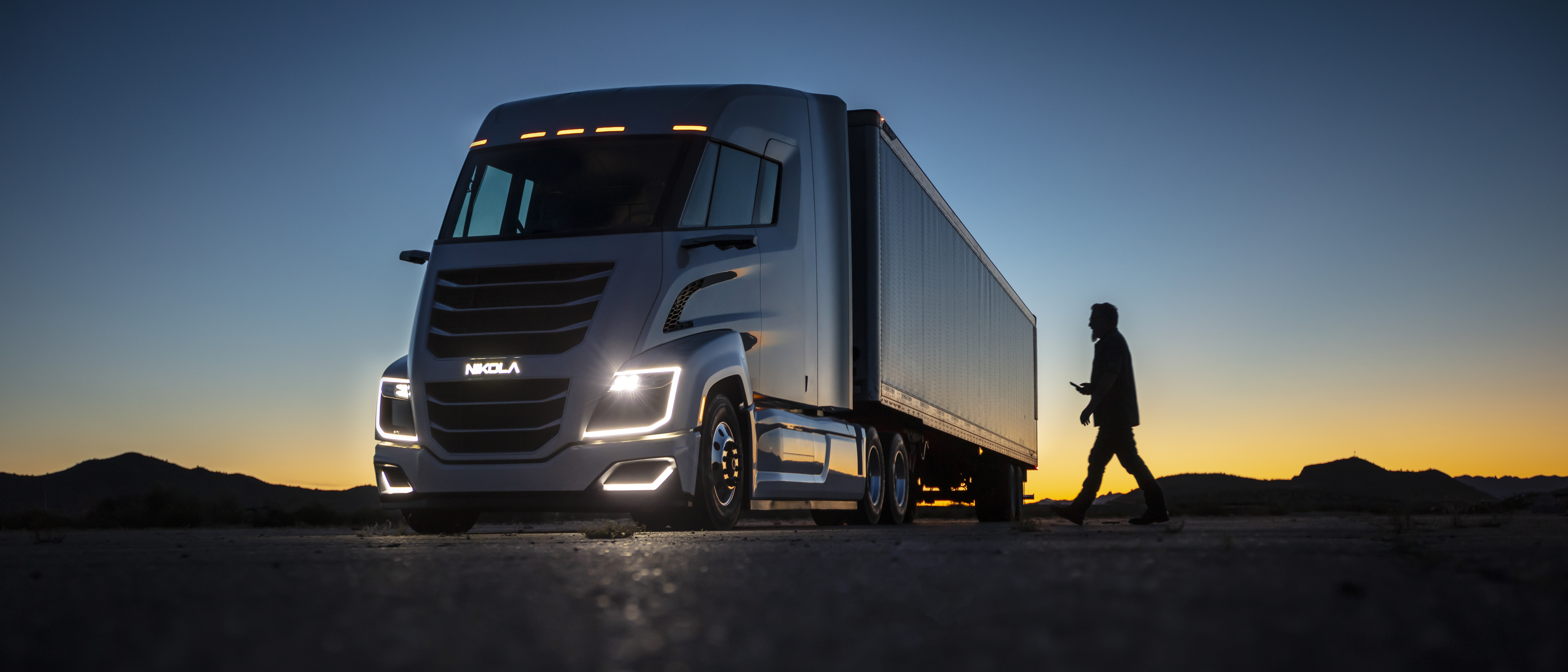The global transition to zero-emission transportation ratcheted up another gear with Nikola Corporation (NKLA) — maker of electric and hydrogen-fueled trucks — going public on the NASDAQ stock exchange on June 4.
The market had a volatile day — Nikola’s stock posted a modest loss — but the timing of the decision to go public reflects growing confidence across the auto industry that clean transport, powered by renewables, will be part of the post-Covid economic recovery.
Two days before the offering, Nikola completed its merger with VectoIQ Acquisition Corp., a special purpose acquisition — or “blank check” — company started by former auto executives specifically to raise funds for a major investment in the evolving transport sector. According to Nikola’s press release, the merger will provide the company with $700 million to be used to break ground on a high-tech manufacturing facility in Arizona, and continue the rollout of its network of hydrogen fueling stations.
The company has also inked a contract with Nel ASA, based in Norway, for the purchase of five industrial-scale electrolyzers, which use electricity generated from solar to split water molecules to produce hydrogen — up to 8 tons a day per electrolyzer.
Nikola’s first all-electric trucks are slated to hit the road in 2021, with hydrogen-fueled models to follow in 2023. In addition to its long-haul and regional models — the Nikola One, Two and Tre — the company recently unveiled a pickup, the Badger, an electric and fuel cell hybrid. The company claims over 14,000 pre-orders for its semis, which it is offering with a leasing option that will allow customers to trade in for a new truck every seven years or 700,000 miles.
As with solar, market analysts are in general agreement that Covid-19 will slow but not stop ongoing growth of zero-emission vehicles, both cars and trucks. For example, in a May update, Bloomberg NEF predicted 31% of all vehicles on the road will be electric by 2040.
Looking ahead, Nikola clearly intends its combination of electric and hydrogen offerings as a key differentiator from its competitors — Tesla and Rivian in the long-haul truck market, and a small fleet of new electric pickups slated for 2021, including Ford’s all-electric F-150.
For those willing to wait, a side-by-side comparison on the company’s website gives hydrogen a competitive edge. Nikola claims a maximum range of 750 miles for its long-haul hydrogen models versus 500 for Tesla’s electric Semi. Nikola’s projected refueling time of 10-15 minutes for hydrogen also beats the 30-minute top-up Tesla’s planned “superchargers” will provide.
Expanding the refueling infrastructure — powered by solar — will be key. While natural gas has traditionally been used to power fuel cells, Nikola’s website shows its electrolyzers running off solar, with procurements based on the geographic location of individual charging stations, according to an email from the company. Nikola is not saying how much solar will be involved, but the company is projecting hundreds of charging stations across the country.
This content is protected by copyright and may not be reused. If you want to cooperate with us and would like to reuse some of our content, please contact: editors@pv-magazine.com.








Hydrogen can soon be produced at the Point of Use without electrolysis using the Ionized Gas Reactor. This is new science and technology – patented worldwide. It may prove possible to generate the Hydrogen on-board fuel cell trucks and cars. The water can be taken from the humidity in the air, ending any need to refuel. See MOVING BEYOND OIL at aesopinstitute.org
Thank you for this article.
“hundreds of charging stations across the country.” Any word on how this may happen? Partnerships? Companies behind? This refueling infrastructure seems quite different than anything.
“hundreds of charging stations across the country.” Any word on how this may happen?
Probably in the same way as gas stations happened.
https://www.smithsonianmag.com/smart-news/short-picture-history-gas-stations-180967337/